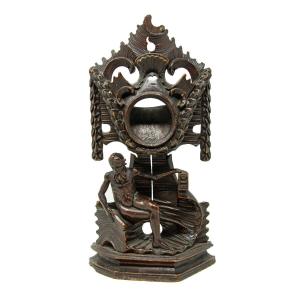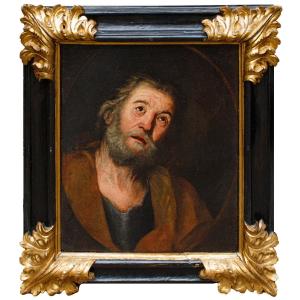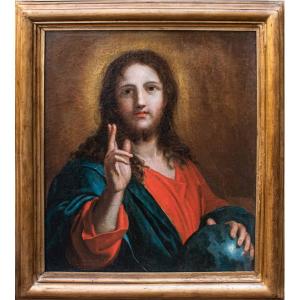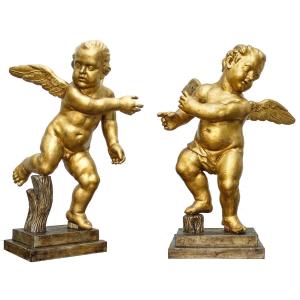Saint Anthony of Padua in adoration of the Child
Oil on copper, 17 x 12 cm
With frame, cm 29 x 24
Although the technique of painting on copper was very widespread, both in Italy and north of the Alps, between the second half of the sixteenth century and the first half of the eighteenth century, the news about it turns out to be particularly limited. Famous Italian, Flemish and German artists chose copper foil as a medium for small and refined paintings. Sebastiano del Piombo, Correggio, Vasari, Bronzino, Carracci, Domenichino, Guido Reni, Rembrandt, Rubens and finally Canaletto are just some of the names that participate in the copper painting season.
Apart from the two early cases of the Madonna and Child by Andrea Solario and the penitent Maddalena del Correggio, both now disappeared, the greatest interest in artists' copper painting can be found from the middle of the 16th century. The increase in production of metal supports is due to several factors: from the improvement of extraction techniques in the quarry to the invention of the rolling mill (first examples of roller presses, powered by water mills, appear in the Codex Atlanticus of Leonardo) The mechanical beating of the sheets made it possible to obtain smooth sheets quickly and without melting. Copper foil proved to be ideal for oil painting because it was a non-absorbent, rigid, smooth medium with the same reddish colour as used for the preparation of the funds. Oil painting on copper foil was established with the development of the Mannerist taste and simultaneously with the improvement of the technique of painted enamels and with the introduction of the engraving.The paintings were refined and small in size - landscapes, still lifes, religious and mythological subjects, battle scenes and gender - intended to enrich the studios of the new bourgeois public, whereas in rarer cases the painting on copper was experimented in large altarpieces: the most famous example certainly coincides with the altarpiece for the chapel of San Gennaro of the Cathedral of Naples, commissioned from the Roman Domenichino and completed by the Spaniard Jusepe de Ribera and the Campanian Massimo Stanzone.
In Italy, small devotional paintings on copper were very early in the spread for the decoration of tabernacles or altars, requested by large families (Barberini, Ludovisi, Aldobrandini, Doria Pamphili, Borgese), by religious orders (as for the tabernacle placed on the altar of San Cristoforo della Certosa in Ferrara, which enclosed the two branches of Agostino and Ludovico Carracci) or by princes, as in the case of the tiny Pietà that Bronzino performed for Francesco I de Medici, now at the Uffizi.The iconography of Saint Anthony of Padua in adoration of the Child is relatively common for the landscape of painting, especially Central-Italian, of the mid-seventeenth century. In particular, the theme is often treated by members of the classicist Guido Reni’s circle: exemplified in this sense is the beautiful painting by Elisabetta Sirani, signed and dated 1662, currently at the National Gallery of Bologna. In the work in question, the Child Jesus arrives sitting on a cloud, and Saint Anthony bows to kiss the little foot of the Divine Son, while some angels and cherubim observe the scene. Sirani’s work, in which the painter puts into action a brilliant reinterpretation of the classicist stylisms of the Carracci and Guido Reni, is a reference point for the Emilian and Central Italian artists of the second half of the seventeenth century, as shown by the work, of more modest quality, Francesco Gessi at the Museums of the City of Ravenna.
The iconographic theme of the Child’s appearance at Sant'Antonio da Padova is also common in the production of artists from the circle of Marche by Federico Barocci. This is witnessed by the Saint Anthony of the National Gallery of Marche and the Apparition of the Child Jesus in Sant'Antonio da Padova of the church of Sant'Antonio in Civitanova Marche (MC).








































 Le Magazine de PROANTIC
Le Magazine de PROANTIC TRÉSORS Magazine
TRÉSORS Magazine Rivista Artiquariato
Rivista Artiquariato